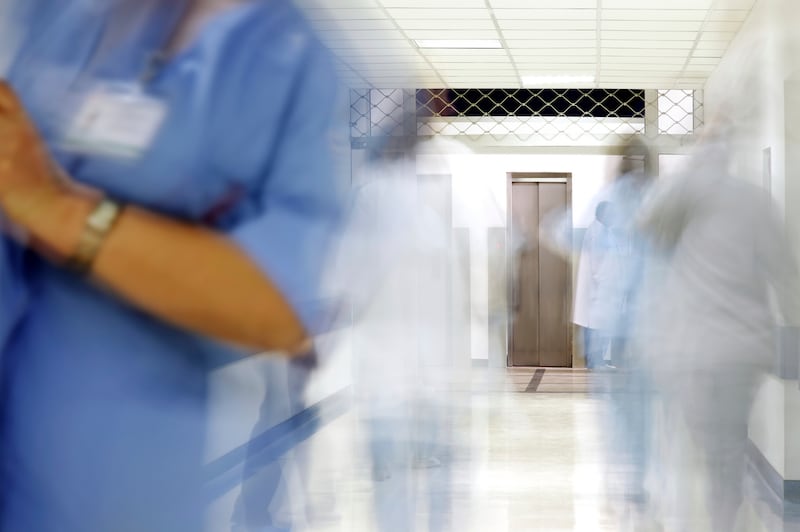How backward of the South to have an argument over a Catholic-owned hospital. We are so much more enlightened up here.
Northern Ireland’s last Catholic hospital was the Mater Infirmorum in Belfast, which specialises in maternity care. There are reports of this occasionally arousing Orange Order suspicion, although no later than the 1950s. The Mater was fully integrated into the National Heath Service (NHS) in 1972, retaining only some vague “Christian charter” that nobody ever mentions. Perhaps this does affect clinical decisions but it is impossible to tell as Christian staff affect decisions everywhere.
In 2004, a BBC investigation discovered 13 of the North’s then 15 accident and emergency (A&E) departments would not dispense the morning-after pill, in breach of official guidelines. However, this would have been due to Protestant and Catholic religiosity, so it raised no notable concerns.
Under devolution Northern Ireland’s hospitals have become increasingly reluctant to perform lawful terminations. Stormont health ministers have refused to clarify guidelines – despite 15 years of legal challenges to do so – while insisting that anyone who breaks the guidelines must be prosecuted.
But the Stormont ministers, the frightened staff and the colleagues they fear will report them are also a mix of Protestants and Catholics, so in the unique political ethos of Northern Ireland it all cancels out.
All-Ireland implications
Debate instead centres on the size of our hospitals, and that has all-Ireland implications. It turns out Northern Ireland is just too small to sustain modern healthcare. As medicine becomes more specialised, it takes an ever-larger population to justify staff and facilities.
There were not enough patients to keep a surgical team busy in Northern Ireland
A straw in this wind could be seen between 2013 and 2015 when two successive DUP health ministers – both considered religious and political hardliners – transferred all children’s heart surgery from Belfast to Dublin.
This was necessary because there were not enough patients to keep a surgical team busy in Northern Ireland, and surgeons need to work full time to maintain their skills and qualifications.
An initial attempt was made to treat children in Britain, with a light aircraft acquired for the purpose. However, this proved awkward for families and alarming in rough weather.
In the end the DUP had no qualms about a cross-Border solution despite the obvious political symbolism and some republican gloating – and that is just as well because one by one specialisations will keep outgrowing the Border.

For example, NHS England now plans brain tumour treatment for minimum catchment populations of 2 million people. Northern Ireland’s population is 1.8 million.
Five official reports
Of course, most healthcare could remain viable on this scale for a very long time if the North had fewer, larger hospitals, hosting regional specialist centres.
Since the late 1990s there have been five official reports – each supposedly transformational – that have advised cutting the number of acute hospitals from 15 to four. Yet two decades on there are still 11 acute hospitals in Northern Ireland, including a new one in Downpatrick that was too small to be viable from the day it opened in 2010, and which has since lost its 24-hour emergency cover.
The same is now about to happen at Newry’s Daisy Hill.
Neither hospital is in financial difficulty. They cannot recruit enough doctors because they are not big enough to provide the teaching places junior staff need or the volume and variety of work senior staff need – in both cases as a career imperative.
However, people in Northern Ireland refuse to accept that small hospitals are doomed and potentially even dangerous.
In Newry this week, 800 people attended a public meeting just to hear local politicians pass the buck
The A&E closure at Downpatrick brought a 15,000-strong protest on to the streets – equivalent to every resident in the town.
In Newry this week, 800 people attended a public meeting just to hear local politicians pass the buck.
So, another cross-Border solution seems likely. Straws in this wind include the radiotherapy centre at Derry’s Altnagelvin hospital, opened in 2016 and shared with Letterkenny University Hospital, or Enniskillen’s new South West Acute Hospital, opened in 2013 and offering cross-Border vascular surgery.
Catchment area
Some cross-Border initiatives have taken place under EU or European Economic Area health-sharing schemes, but most have been arranged directly by Northern and Southern authorities and can continue after Brexit.
The fate of the NHS in a united Ireland is a topic of some debate, and it seems we will have a dry run, via an exchange of patients
Paediatric specialisations have some of the largest catchment area requirements, meaning Northern patients are almost certain to be outsourced to Dublin’s new National Maternity Hospital.
The fate of the NHS in a united Ireland is a topic of some debate, and it seems we will have a dry run, via an exchange of patients. There will be surprisingly few unionist objections to this, even if it involves Catholic ethos hospitals – on reproductive healthcare, nuns and DUP ministers may be the last people left on the island who concur with each other’s positions.
The real surprise will be for those who think all-Ireland co-operation means secularism. That is far from inevitable. Perhaps the South will just import our Catholic and Protestant ethos.














